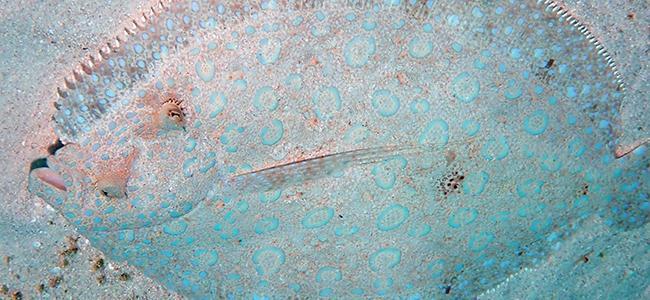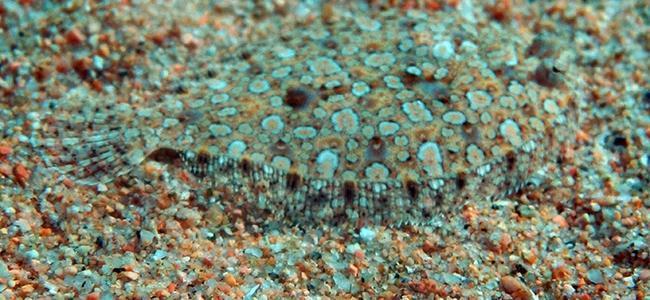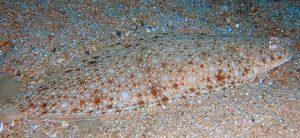We are in front of a group of fish, the Flatfishes, which are undoubtedly extremely unique due to their shape, as well as very relevant economically because of their interest in commercial fishing consequence of their high status as species for human consumption.
Juvenile Flatfishes are bilaterally symmetrical and swim in an upright position, but rapidly during their development they undergo a metamorphosis whereby one of the eyes migrates across the top of the head to a position next to the eye on the other side of the head. At this point, individuals move into a horizontal swimming position with the non-eye side down. The body is heavily compressed laterally, being somewhat thicker at the edge where the eyes are located, and somewhat less so where they are not. The eyes can protrude from the surface of the body, allowing them to see when they are buried in the substrate, where they spend much of their time. In general, the side of the fish that does not have an eye is usually white or clear, while the opposite side, where the eyes are located, has a pigmentation that allows them to camouflage themselves in the environment and go unnoticed. As they are carnivorous species, and taking advantage of both their pigmentation and their burial in the sand, when any of their prey passes unnoticed where it is camouflaged, they are quickly swallowed with a quick movement, without giving the prey time to even react.
Generally, Flatfishes species are right-handed (both eyes in adult individuals are on the right side and the left side is the one in contact with the substrate), or sinister (both eyes in adult individuals are on the left side and the right side is the one in contact with the substrate). Few species (e.g. Platichthys stellatus) have both right-handed and left-handed individuals.
The case of halibut (Hippoglossus hippoglossus) is undoubtedly the longest Flatfish species, with specimens recorded as exceeding 3 meters in length. The rest of Flatfishes usually do not reach this considerable size and are smaller in size. There are 772 species of Flatfishes, grouped into 14 families and 129 genera. Of these, only 10 species occur only in fresh water.


